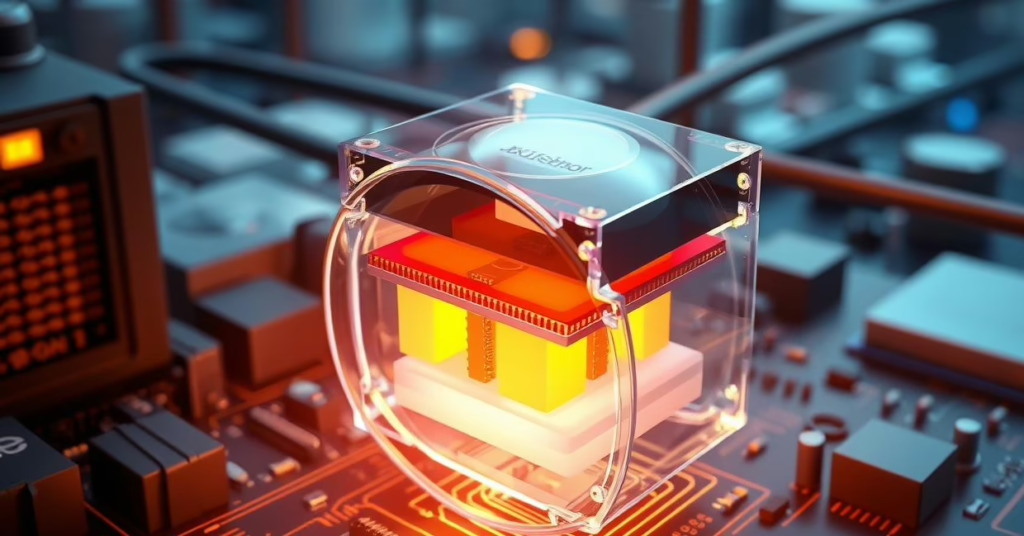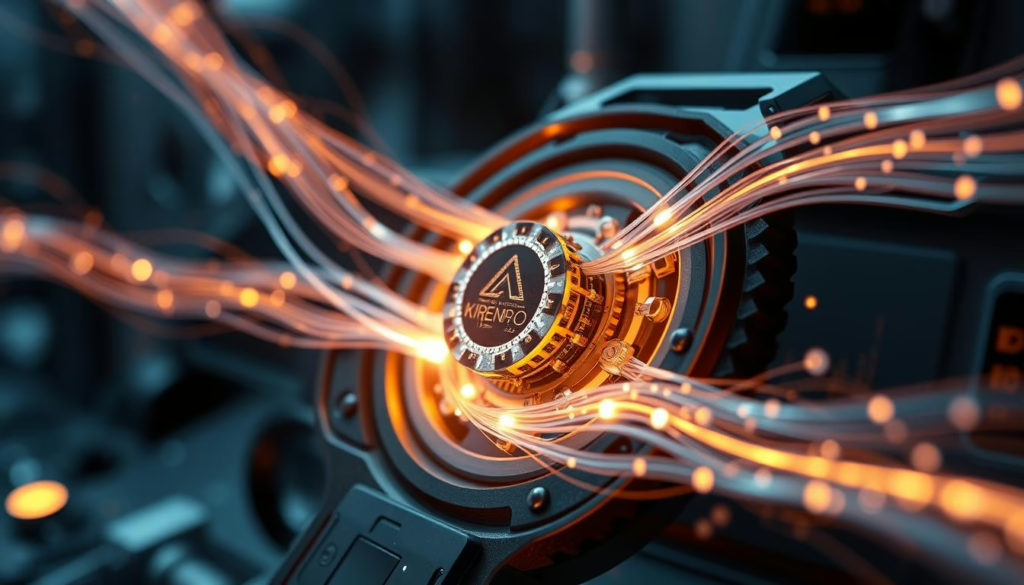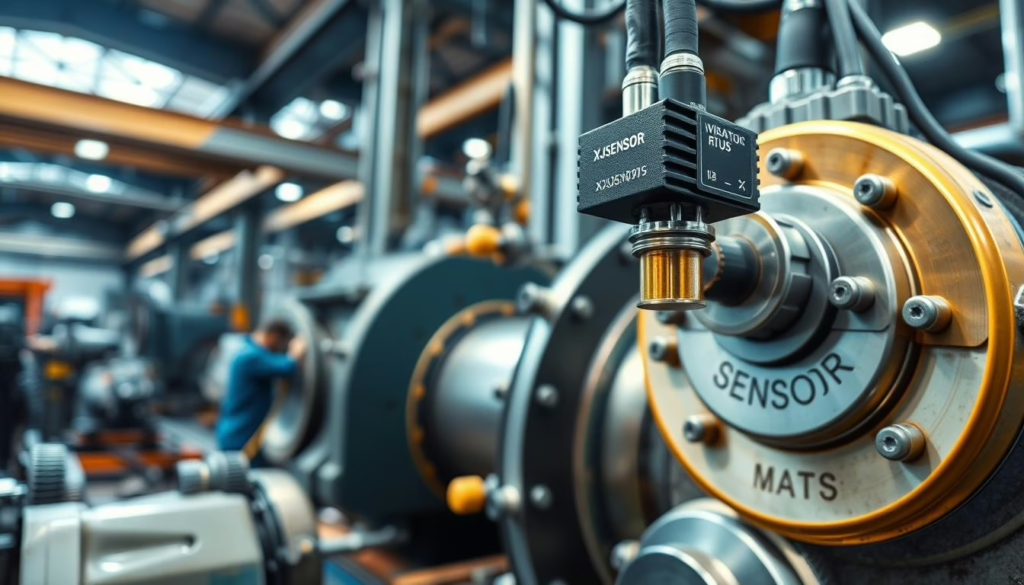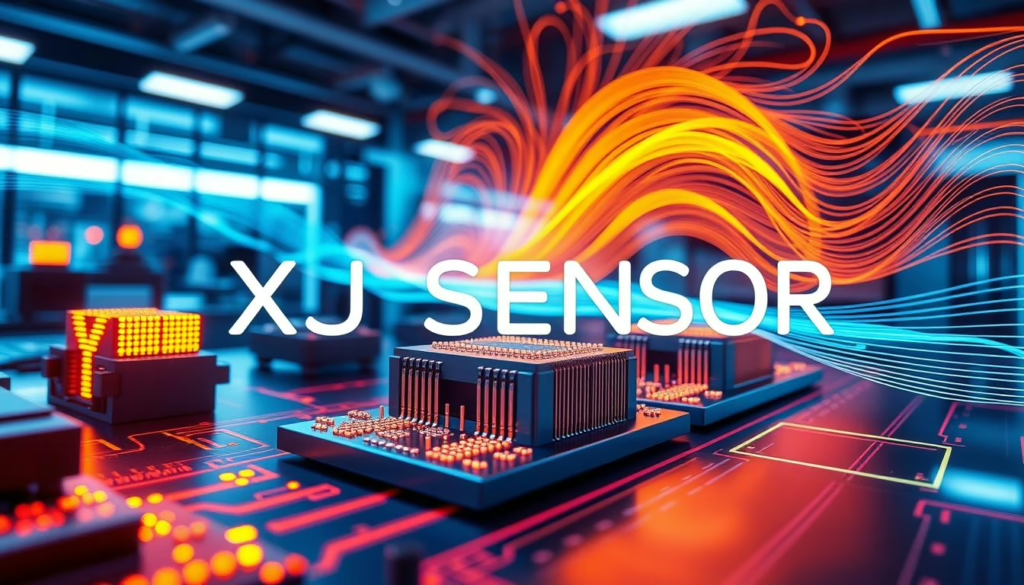In today’s fast-changing world, piezoelectric transducer sensors play a key role. They turn mechanical stress into electrical signals. This makes them vital in many fields.
At their heart, piezo sensor technology is known for being very sensitive and tough. It works well even in tough conditions. Companies like XJCSENSOR are leading the way in pzt transducer innovation. They are pushing what these sensors can do.
Knowing how piezoelectric transducers work helps us see their importance in today’s tech.
Key Takeaways
- Piezoelectric transducer sensors convert mechanical stress into electrical signals.
- High sensitivity and durability make piezo sensor technology essential in many industries.
- Manufacturers like XJCSENSOR are leading advancements in pzt transducer innovation.
- These sensors function reliably even in harsh conditions.
- Understanding piezoelectric transducers enhances our grasp of modern technological applications.
Introduction to Piezoelectric Technology
Piezoelectric technology is a field that’s both fascinating and constantly evolving. It plays a key role in modern sensor applications. Knowing about piezoelectricity helps us understand the many functions of piezoelectric transducer sensors.
Definition of Piezoelectricity
Piezoelectricity is when certain solid materials generate an electric charge when stressed. The definition of piezoelectricity is key to seeing how sensors turn mechanical energy into electrical energy. Materials like quartz, certain ceramics, and even bone can do this, making them crucial in many sensing roles.
Historical Development of Piezoelectric Materials
The history of piezoelectric transducers began in the late 19th century with the Curie brothers’ discovery. This discovery was a major step forward for technology. Since then, the development of piezoelectric ceramics in the mid-20th century greatly enhanced sensor performance and use.
The evolution of piezoelectric materials keeps moving forward. Advances in materials science and engineering have opened up new uses for piezoelectric sensors. These include fields like robotics, healthcare, and environmental monitoring.
Types of Piezoelectric Sensors
The world of piezoelectric sensors is full of variety and interest. Knowing the different types helps us pick the right ones for each job. Let’s look at the main types of piezoelectric sensors and what makes them special.
Piezoelectric Sensors Overview
Piezoelectric sensors are key in many fields because they turn mechanical energy into electrical energy. This lets us measure and watch things closely. There are different types like piezoelectric transducers, piezo detectors, and piezoceramic sensors. Each has its own uses and benefits.
Piezoelectric Transducers
Piezoelectric transducers help us get data on mechanical changes and turn them into electrical signals. They’re crucial in fields needing high sensitivity and quick response, like precision engineering and medical tools. XJCSENSOR has top-notch piezoelectric transducers that boost production and make equipment more reliable.
Piezoelectric Detectors
A piezo detector picks up on mechanical vibrations and sends out electrical signals. They’re vital in aerospace, automotive, and industrial fields where checking vibrations is key. Their flexibility and accuracy make them key for checking quality and predicting maintenance needs.
Piezoceramic Sensors
Piezoceramic sensors use piezoceramic materials to spot and measure mechanical stress. They’re tough and can handle high frequencies well. XJCSENSOR’s piezoceramic sensors are made for the new energy field, helping with better energy use and storage in battery making and other areas.
| Sensor Type | Key Features | Ideal Applications |
|---|---|---|
| Piezoelectric Transducers | High sensitivity, rapid response | Medical devices, precision engineering |
| Piezoelectric Detectors | Vibration analysis, versatile | Aerospace, automotive, industrial quality control |
| Piezoceramic Sensors | High durability, high-frequency suitability | Harsh environments, new energy sector |
Working Principles of Piezoelectric Transducer Sensors
Piezoelectric transducer sensors are key in converting mechanical changes into electrical energy. They use a special property called piezoelectricity. This property lets certain materials create an electric charge when they feel mechanical stress.
Mechanism of Piezoelectricity
These sensors work because some materials can make an electric charge when they bend or stretch. Crystals like quartz and certain ceramics are good at this. When they get pressed, their structure changes, creating an electric dipole moment.
This ability is what makes piezoelectric sensors so precise and reliable. They are used in many areas because of this.
Conversion of Mechanical Energy to Electrical Energy
Piezoelectric transducer sensors are great at turning mechanical energy into electrical signals. This is important for many technologies. For example, in medical devices, they help with precise dosing and fluid delivery.
Companies like XJCSENSOR make these sensors. They use them to improve patient care in advanced medical beds.
Role of Stress and Strain in Sensor Performance
The performance of piezoelectric sensors depends on stress and strain. When a material is stressed, it deforms and creates an electric charge. This charge is related to the force applied.
This relationship is key for precise measurements. For example, in robotics. XJCSENSOR uses these sensors to make robots more accurate and efficient.
Applications of Piezoelectric Transducer Sensors
Piezoelectric transducer sensors are key in many areas. They turn mechanical energy into electrical signals. They are used in industries, healthcare, electronics, and for environmental monitoring.
Industrial Applications
In industries, these sensors are vital for checking conditions and vibrations. They help in monitoring engine performance and controlling hydraulics in construction machines. XJCSENSOR uses advanced tech to boost productivity, safety, and reliability on tough construction sites.
Biomedical Applications
In healthcare, biomedical piezo applications are a big help. They make medical imaging, patient monitoring, and surgeries like ultrasonic ones more precise. These sensors are essential in today’s medical tools.
Consumer Electronics
In consumer electronics piezoelectricity, these sensors stand out. They make devices like touch screens and gaming controllers better. Companies like Apple and Samsung keep making gadgets more user-friendly.
Environmental Monitoring
Environmental piezo sensors are important for tracking sound, vibrations, and other environmental factors. They help meet environmental rules and make places healthier. More work in this area will help us protect our environment better.
Piezoelectric transducer sensors are very useful in many fields. For more on sensor tech, check out the XJCSENSOR page. They aim to improve sensor tech for different needs.
Advantages of Piezoelectric Sensors
Piezoelectric sensors are key in today’s world. They are known for their efficiency and have many benefits. These make them perfect for different places and jobs.
High Sensitivity and Accuracy
Piezoelectric sensors are very sensitive and accurate. They can spot small changes in pressure or vibration. This is great for jobs that need exact control and monitoring.
With XJCSENSOR’s advanced sensors, we can control machines better and keep them safe.
Wide Frequency Response
These sensors can handle a wide range of frequencies well. This is good for jobs that need data from many different conditions. They give reliable and accurate measurements, even in tough tasks.
Compact Size and Lightweight Design
These sensors are small and light, making them perfect for tight spaces. They don’t take up much room and are easy to fit into systems. This is especially useful in modern farming equipment, where space is limited.
Companies like XJCSENSOR have made these sensors even better. They help with advanced automation, fitting easily into complex machines.
| Advantage | Benefit |
|---|---|
| High Sensitivity and Accuracy | Precise measurements for control and monitoring |
| Wide Frequency Response | Comprehensive data capture across varied conditions |
| Compact Size and Lightweight Design | Easy integration into space-constrained applications |
Challenges and Limitations
Piezoelectric sensors have many benefits, but they also face challenges. It’s important to understand these to improve their performance. This knowledge helps choose the right material for different uses.
Temperature Sensitivity
One big issue is temperature sensitivity. Changes in temperature can mess up the sensor’s readings. This problem, called piezoelectric temperature sensitivity, needs careful thought in design and use.
Signal Conditioning Requirements
Another big challenge is piezo signal conditioning. These sensors make high-impedance charges that need to be changed into useful signals. Without the right signal conditioning, the data quality suffers. This affects the sensor system’s reliability.
Material Limitations
Piezoelectric materials have their own piezoelectric material challenges. They can be fragile and wear out over time. This limits their durability and lifespan. Overcoming these material issues is key to improving piezoelectric sensor technology and ensuring they last long.
| Challenge | Description |
|---|---|
| Temperature Sensitivity | Affects sensor accuracy with temperature variations. |
| Signal Conditioning | Essential for converting high-impedance charge to usable signals. |
| Material Limitations | Brittleness and degradation limit durability and lifespan. |
Future Trends in Piezoelectric Technology
Piezoelectric technology is on the verge of a big change. This change will come from better materials, working with IoT and smart systems, and lots of research.
Advancements in Materials
New discoveries in material science are changing piezoelectric tech. Future materials will be stronger and work better, making sensors more efficient. New piezoelectric materials could be even more sensitive, perfect for many uses.
Also, there’s a push for lead-free materials. This move is good for the planet and meets global goals for sustainability.
Integration with IoT and Smart Systems
Putting piezoelectric sensors with IoT and smart systems is very exciting. This IoT piezo integration lets us collect and analyze data in real-time. It helps us make better choices and improve how things work.
Smart homes and industrial systems will get a lot of benefits from this. They’ll work better and more efficiently.
Research and Development Directions
Right now, scientists are looking into new ways to use piezoelectric tech. They’re working on everything from medical devices to environmental sensors. The possibilities are endless.
By pushing the limits of piezo R&D, we’ll find new coatings and systems. These will make current tech better and open up new areas in many fields.
Innovation and exploring new things in materials and IoT integration are crucial. The future of piezoelectric tech is full of promise, ready to change many industries.
Conclusion
As we conclude our deep dive into piezoelectric transducer sensors, let’s reflect on what we’ve learned. We’ve covered everything from the basics of piezoelectricity to the many uses of these sensors. This journey has shown us the vast potential and innovation in technology.
Summary of Key Points
We explored many sides of piezoelectric transducer sensors. We started with what piezoelectricity is and how it has evolved over time. Then, we looked at the different types of sensors and how they work to turn mechanical energy into electrical signals.
Next, we got into the details of how these sensors work. We saw how stress and strain affect their performance. We also saw how these sensors are used in many areas, from industry to health and even in our homes.
We talked about the benefits of these sensors, like their high sensitivity and wide range of uses. But we also discussed the challenges they face, like being affected by temperature and material issues. Finally, we looked at what’s coming next, with new materials and integration with the Internet of Things.
Final Thoughts on Piezoelectric Transducer Sensors
Looking back at piezoelectric transducers, we see how crucial they are for modern tech. They offer great precision and are used in many fields. Companies like XJCSENSOR are leading the way, pushing the boundaries of what sensors can do.
In summary, piezoelectric transducer sensors show our creativity and the constant growth of technology. They help make things more efficient and accurate in many areas. As we move forward, their role in changing industries is exciting and full of possibilities.







